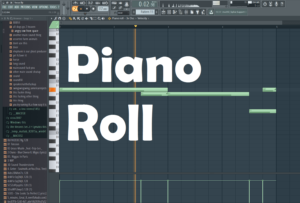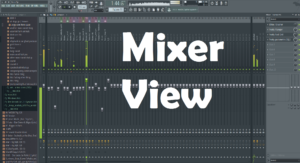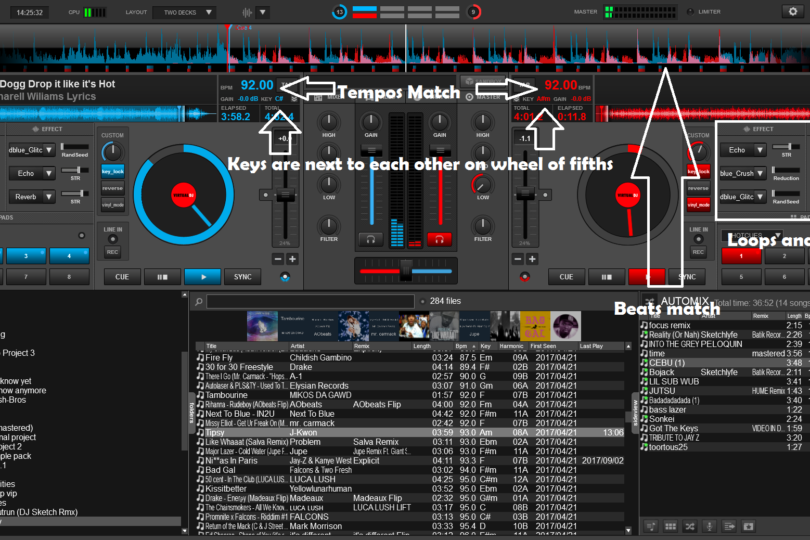It’s shocking how much music is a part of my life today. For most of my life, I wasn’t really an active listener to music at all. It wasn’t until Fall of 2012, when I visited Tech for the first time, I got bored on the car ride back, especially since I was only 16 and had to have my parents drive me to and from Blacksburg. I decided to listen to my brother’s Ipod on the way home and came across The Glitch Mob. I fell in love with “Drink The Sea” and “We Can Make The World Stop.” From that point forward, I continued to listen to more and more electronic music with my favorites at the time being Bassnectar and Wolfgang Gartner.
I was also very involved with my Youth Group at that time. Their church services had normal contemporary praise and worship music but they also played hip hop and electronic music as well. In February of 2013, they were trying to recruit DJs and because of my passion to serve God, I decided to sign up. Two months later, I was diagnosed with Ulcerative Colitis and lost half the blood in my body. Because of this, the time I spent running for track and cross country I now spent practicing DJing.
Once I started college, one of my best friend’s roommates made music and introduced me to FL Studio which is the Digital Audio Workstation (DAW) that I use to this day. The longer I’ve been in college, the more opportunities I’ve been given to DJ including anything from Djing frat parties to opening at local festivals. Around this time last year, I was on average DJing every weekend and could even pay rent with DJing money for a month or two.
Likewise with creativity, DJing is very ambiguous. The goal of DJing is to play music that is appealing to you and your audience while also playing it in a way that is appealing. A lot of DJs will play songs and then once the drop is about to play, they will switch the song. A lot of DJs finger drum which essentially means that they have a bunch of preloaded samples that can each become active by pressing a button. A lot of DJs won’t transition between songs at all and will just press play but people will still like these DJs because they play music that is appealing to a mainstream audience which is really shitty. A lot of DJs fade seamlessly from one song to another. This is typically what I do.
Fading between songs by itself is very easy to do but really mastering this skill can be fairly difficult and takes years of practice. Typically, I take two songs that are stylistically similar or have good genre synergy and are at most within 5 – 10 beats per minute from each other. If the songs are not within 5 – 10 beats per minute difference, one of the songs will sound unrealistically fast or slow. If the songs are not stylistically similar, the mix that you’re creating will lack a general vibe or sense of energy.
The songs should also be of similar key. This means that the songs are either the same key or they are next to each other on the wheel of fifths. Two scales that are next to each other on the wheel of fifths share the same notes except for one note. For example, the C major scale, which has all natural notes (no sharps or flats,) is directly next to the G major scale, which has all natural notes except for f sharp. It is important to pick 2 songs with similar keys because otherwise the combination of the songs playing together will sound off key.
After selecting the songs, I will play one and then will start to play the next song once the first song reaches a point where either new sounds are introduced and / or taken away. This usually happens every 4, 8, or 16 bars. I will then either keep playing the song until the second song reaches a new point or I will loop part of the 1st song and / or add effects to it. Below is the transition shown in the featured picture (profanity warning!).
Music Production is also ambiguous in the way that almost any sound or song can be created although music production is much much more complicated than DJing. There is so much more to manipulating sound than there is to simply blending 2 songs together. My best bet here is to just talk about the basics of navigating a Digital Audio Workstation. At first glance when opening FL Studio, we have the playlist view, which is the place in which the sounds, patterns, and automations are placed to show the sounds that are played over the duration of the song. The mixer view allows the user to add effects to sounds and adjust the volume and the volume of certain frequencies. The piano roll allows the user to make sounds in different semitones in different patterns which can later be placed in the playlist view. And finally, the channel rack allows users to organize sounds in a drum sequencer or to select the menu for the sounds themselves.




I plan on using sounds that I create for the class project. We plan on creating a virtual reality game or simulation that portrays what it is like to have certain mental disorders. Since I have Type 1 Bipolar Disorder, I believe I have the skills to portray what it is like to have auditory hallucinations. We plan on using the DISIS lab in the library to demo or simulation since it’s right next to the VR room and is easier to reserve than the Cube. There is also a need for audio engineering in Computer Science. Sound is necessary for or at least enhances certain software applications. I would love to have a job where I could incorporate both music and programming at the same time.
